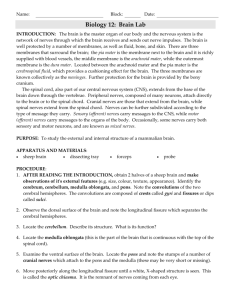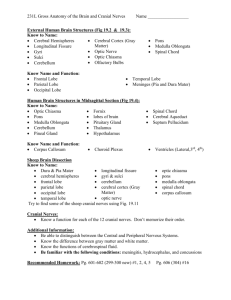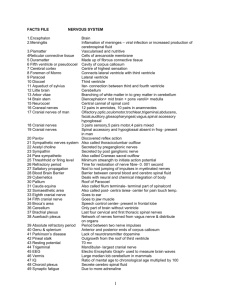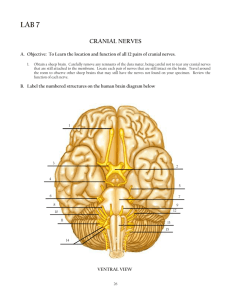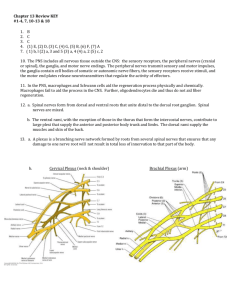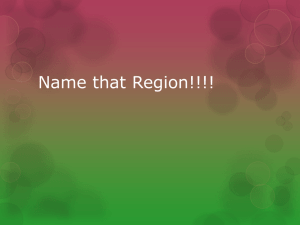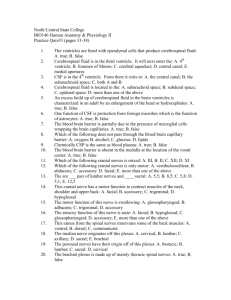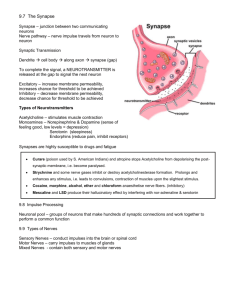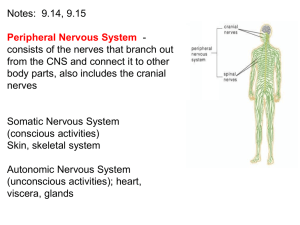Lab 11
advertisement
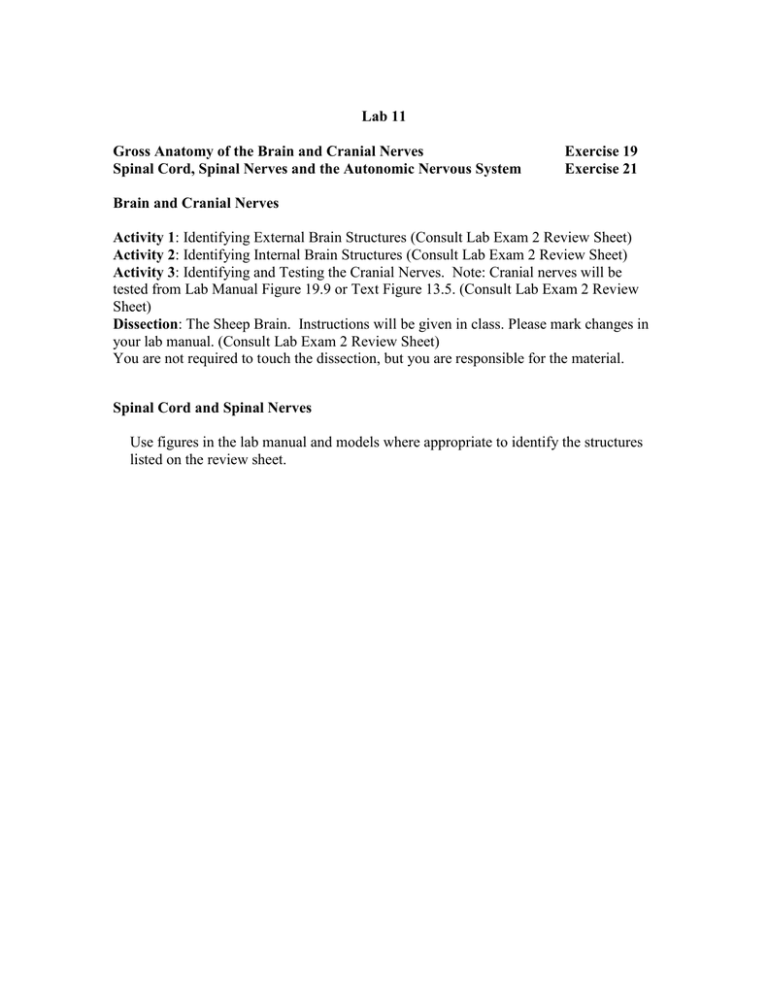
Lab 11 Gross Anatomy of the Brain and Cranial Nerves Spinal Cord, Spinal Nerves and the Autonomic Nervous System Exercise 19 Exercise 21 Brain and Cranial Nerves Activity 1: Identifying External Brain Structures (Consult Lab Exam 2 Review Sheet) Activity 2: Identifying Internal Brain Structures (Consult Lab Exam 2 Review Sheet) Activity 3: Identifying and Testing the Cranial Nerves. Note: Cranial nerves will be tested from Lab Manual Figure 19.9 or Text Figure 13.5. (Consult Lab Exam 2 Review Sheet) Dissection: The Sheep Brain. Instructions will be given in class. Please mark changes in your lab manual. (Consult Lab Exam 2 Review Sheet) You are not required to touch the dissection, but you are responsible for the material. Spinal Cord and Spinal Nerves Use figures in the lab manual and models where appropriate to identify the structures listed on the review sheet. Name____________________________ Lab Section ________________ Review Sheet Sheep Brain Dissection Compare the size of the cerebral hemispheres, brain stem and olfactory lobe in the sheep brain to the preserved human brain when answering below. 1. Which is (are) larger in the human brain? ______________________________ Why do you think this is so? _______________________________________________________________ _______________________________________________________________ 2. Which is (are) larger in the sheep brain? ______________________________ Why do you think this is so? _______________________________________________________________ _______________________________________________________________ 3. Which is (are) about the same size in both brains? ___________________________ Why do you think this is so? _______________________________________________________________ _______________________________________________________________ Gross Anatomy of the Brain and Cranial Nerves 1. Match the labels on the figure with the terms below: A B ___ Brain stem C ___ Central sulcus D ___ Cerebellum E ___ Frontal lobe F ___ Gray matter G ___ Gyrus ___ Occipital lobe H ___ Parietal lobe I ___ Postcentral gyrus ___ Precentral gyrus J K ___ Sulcus L ___ Temporal lobe M ___ White matter A B C I D E J F K G L H 2. Label on the figure above: ____ Arbor vitae ____ Intermediate mass of thalamus ____ Cerebral aqueduct ____ Medulla oblongata ____ Choroid plexus ____ Occipital lobe ____ Corpora quadrigemina ____ Pineal Gland ____ Corpus callosum ____ Pituitary Gland ____ Hypothalamus ____ Pons 3. Trace the flow of cerebrospinal fluid from the lateral ventricles to the point where it is returned to the circulatory system in the dural sinus. Use the figure in the text or in the lab manual. Lateral Ventricle ______________________ ______________________ ______________________ Fourth Ventricle ______________________OR ___________________ OR_____________________ 4. a. List the three meninges of the central ___________________ nervous system. ___________________ Dural Sinus _____________________ _____________________ _____________________ b. In what major way do the meninges of the spinal cord differ from the meninges of the brain? 5. The Cranial Nerves. List and learn the name, number, type, part of the brain, and part of the body associated with each of the cranial nerves. Use Table 19.1 Double-check your answers. There are 3 that are essentially purely sensory, 3 that are essentially motor, and 5 that are considered mixed. Name of Nerve Number of Nerve Type (Sensory, Motor or Mixed) Brain Association Forebrain Forebrain Midbrain Midbrain Pons Pons Pons Pons Medulla Oblongata Medulla Oblongata Medulla Oblongata Medulla Oblongata Spinal Cord Body Association 1. Match the labels on the figure with the following terms: ____ Dorsal root E A ____ Dorsal root ganglion ____ Dura mater B ____ Gray matter F ____ Pia mater G ____ Spinal nerve H ____ Spinous process ____ Ventral root C I ____ White matter D Identifying the Major Nerve Plexuses and Peripheral Nerves 1. Match the four major nerve plexuses with the major nerve - or nerves - associated with each. Nerve Plexus Major Nerve(s) Femoral Phrenic Musculocutaneous, Radial, Ulnar, Median Sciatic Name____________________________ Lab Section ________________ Pre-lab Activity – Eye and Ear. 1. What are the three basic layers of the eyeball? ___________________, ______________________, and ___________________. 2. The transparent part of the outer layer of the eyeball is called the ____________ . 3. The hole in the center of the iris is called the __________ . 4. Put the following terms in the correct order for the pathway of light into the eyeball. ______ Cornea ______ Retina ______ Lens aqueous humor ______ Vitreous humor ______ Pupil 6. The three parts of the ear are the ___________________, ______________________, and ___________________. 7. What is the name of the organ of hearing? 8. Other than hearing, what is another role for the inner ear. 9. Trace the pathway of sound waves into the ear. ______ Auditory canal ______ Perilymph of inner ear ______ Malleus, Incus, Stapes ______ Oval window ______ Tympanic membrane

